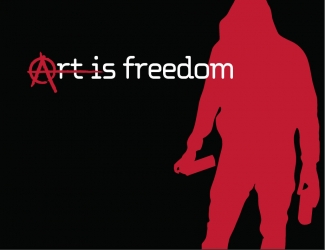Graffiti Artist Rewriting the Rules of Business
What’s the connection between art, creativity and business?
Creativity is the catalyst to stimulate breakthrough ideas in both art and business. Creativity is the vessel that allowed Picasso and Michaelangelo and other great artists to channel works of art that the world had never seen before. And in business, it is that exact same style of creative thinking that game changing entrepreneurs are leveraging to create strategies that their competitors never dreamed possible. Creativity is seeing what the rest of the world logically sees with their eyes but thinking like no one has ever thought before. It allows us to anticipate emerging trends in future markets before they happen. To be pro-active as opposed to re-active
Why are creativity and sustained innovation key to compete in today’s world of accelerated change?
As the landscape for business continues to change, Leaders need a steady stream of disruptive strategies and unexpected solutions to stay ahead of the game. —solutions that revive stagnant markets or completely reinvent the competitive dynamics of an industry. Disruptive Thinking is about fostering a culture of innovation leadership that provides the framework and motivation to generate those strategies and execute those solutions. It is an essential skill for any business leader, from a small start-up to a global corporation, with the desire to transform organizational processes and behaviors, and ask, “Why hadn’t we ever thought about our business and culture this way before?” To thrive in this new era, organizations and institutions, executives and entrepreneurs need to rethink the habits that have made them successful in the past, and challenge the conventional wisdom and industry models that have defined their world.
Creativity is the catalyst frees the mind to not be locked into a single answer or set of solutions. It twists and turns and is constantly seeking “other” right answers and not relying on yesterdays formula for success. It never settles for the first reflexive response which inevitably is simply a regurgitated blueprint of something that has already been done before. If we do not employ creativity as a core cultural imperative in business we will be stuck in yesterdays success and actively resist change.
What sort of framework do you suggest for chief learning officers to promote innovation and creativity with their organizations?
The most efficient framework for Chief learning officers to promote innovation is to create a culture that rewards creative thinking. Your best sustainable in edge in business is the ability to differentiate yourself from your competition. Relying on yesterday’s “winning formula” can ultimately be a disguise for resisting change. The truly great companies of tomorrow are pro-actively altering their own landscape for success. They continue to re-invent themselves to be visibly different from the competition. Specifically, I recommend a framework that includes some variation of social media interaction. Build a professional platform that engages and ignites new ideas. Let go of old perceptions of how social networking (Facebook, Twitter and blogging) works for our kids, and create the framework that channels success strategies throughout your learning organization in a viral, fun and strategic way. If social media was a blank canvas? If it never existed before today? How would you use it as a learning officer to create a competitive advantage in the marketplace? How would you engage your team to share ideas differently and collaborate in ways to work smarter as opposed to just simply working harder? I use my Facebook and Twitter account to strategically grow my brand. www.facebook.com/iamerikwahl and twitter @erikwahl. I have learned to use these frameworks to create tribes of loyal followers who are willing to spread my message. My Facebook and Twitter fans are my very best source of marketing. and my most affordable form of building my brand to promote innovation and creativity.

What are the challenges associated with gaining creativity as a global leadership competency?
The biggest challenge by far is the standardization of success formulas or “best practices.”. Our industrial factory educational system and our corporate heirchtical structure are designed to reward lockstep and conformity. This robotic standardized learning paradigm is the biggest obstacle that inhibits new ideas. The existing model rewards us for obeying the rules of yesterday, to streamline operational efficiencies and resist new patterns of thought. Our biggest challenge is to find new ways to de-familiarize the ordinary. The companies that embrace creativity as a core global leadership competency are better equipped to succeed in the future.
How can learning leaders help their employees manage the change as they adapt their competencies?
By building emotional commitment and connection to drive future discretionary effort. Create a culture from the top down that rewards new ideas. This is a paradigm shift. It should be uncomfortable. It empowers employees and leads them to take ownership for the future as opposed to micromanaging so that they perform the systematic task at hand. It really goes back to the beginning of the process. Hire for attitude, flexibility and creatvity and then train for skill.










